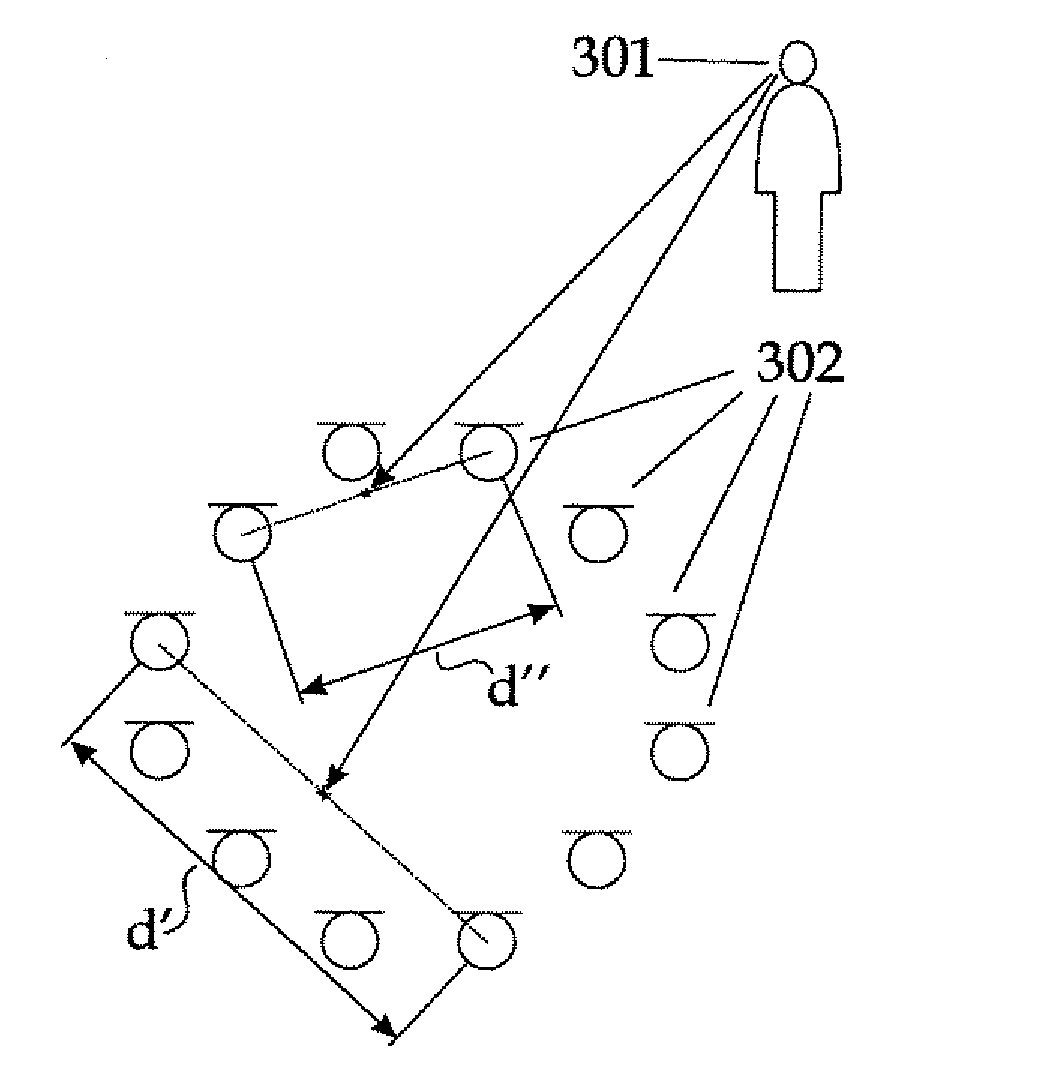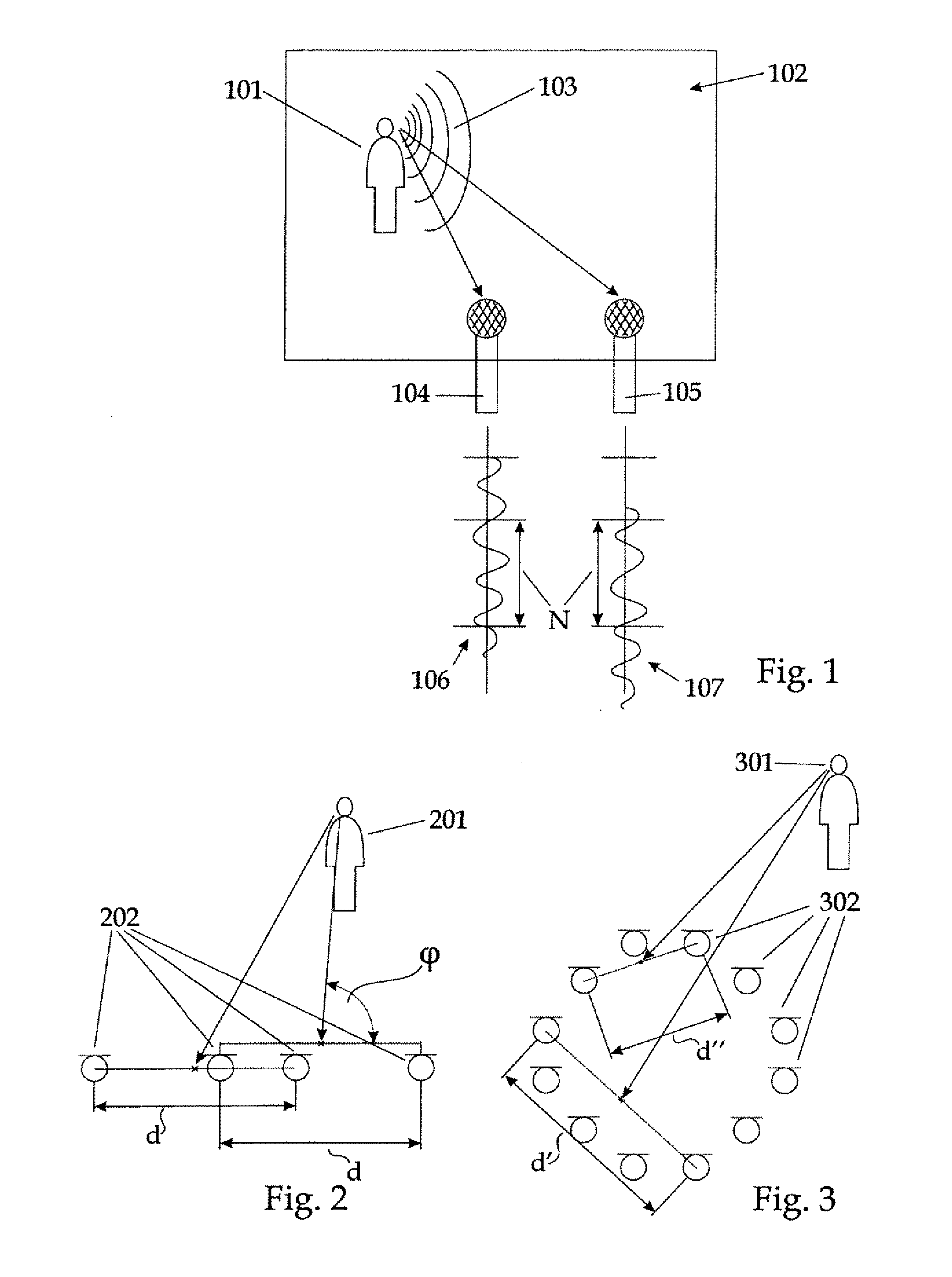Joint position-pitch estimation of acoustic sources for their tracking and separation
a technology of acoustic sources and joint position estimation, applied in the direction of direction finders, speech analysis, instruments, etc., can solve the problems of uncorrelated noise testing on data, uncorrelated noise assumption by most of the existing algorithms, and high investmen
- Summary
- Abstract
- Description
- Claims
- Application Information
AI Technical Summary
Benefits of technology
Problems solved by technology
Method used
Image
Examples
Embodiment Construction
[0038]FIG. 1 shows a schematic setup for the application of a method according to the invention. For the sake of simplicity, only one acoustic source is depicted here. As already mentioned, the method is especially adapted to be used in a multi-source environment. A person 101 in a room 102 represents an acoustic source, emitting an audio signal 103. A linear array of two microphones 104, 105 is placed in the room 102 as recording means to record the audio signal 103. The microphones 104, 105 produce a two-channel recording signal, with a left channel 106 and a right channel 107, together forming a stereophonic audio signal. The more pairs of microphones are used, the better, however two microphones are enough to explain the principle of the method below.
[0039]FIGS. 2 and 3 show two possible arrangements of a plurality of recording means. FIG. 2 shows a speaker 201 and a linear array of microphones 202, the microphones 202 being grouped into pairs, the microphones of each pair havin...
PUM
 Login to View More
Login to View More Abstract
Description
Claims
Application Information
 Login to View More
Login to View More - R&D
- Intellectual Property
- Life Sciences
- Materials
- Tech Scout
- Unparalleled Data Quality
- Higher Quality Content
- 60% Fewer Hallucinations
Browse by: Latest US Patents, China's latest patents, Technical Efficacy Thesaurus, Application Domain, Technology Topic, Popular Technical Reports.
© 2025 PatSnap. All rights reserved.Legal|Privacy policy|Modern Slavery Act Transparency Statement|Sitemap|About US| Contact US: help@patsnap.com



